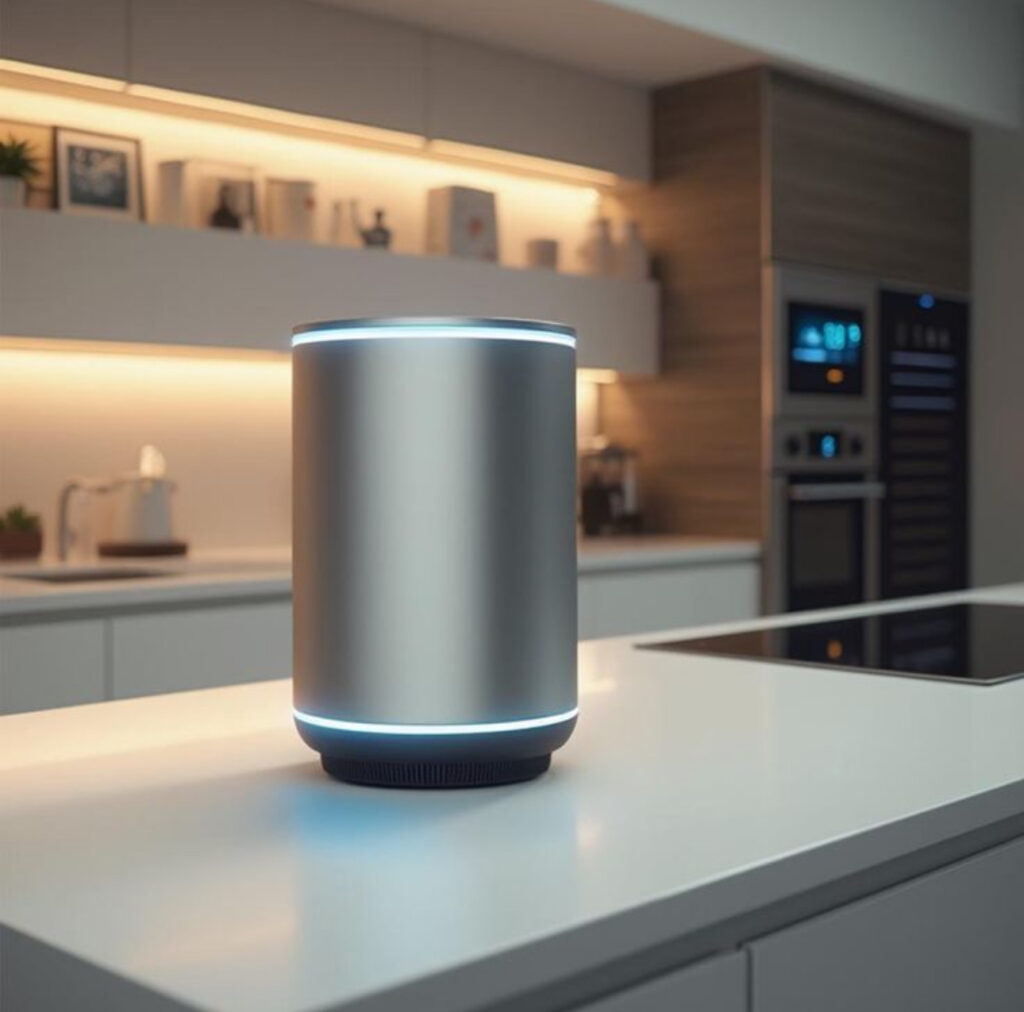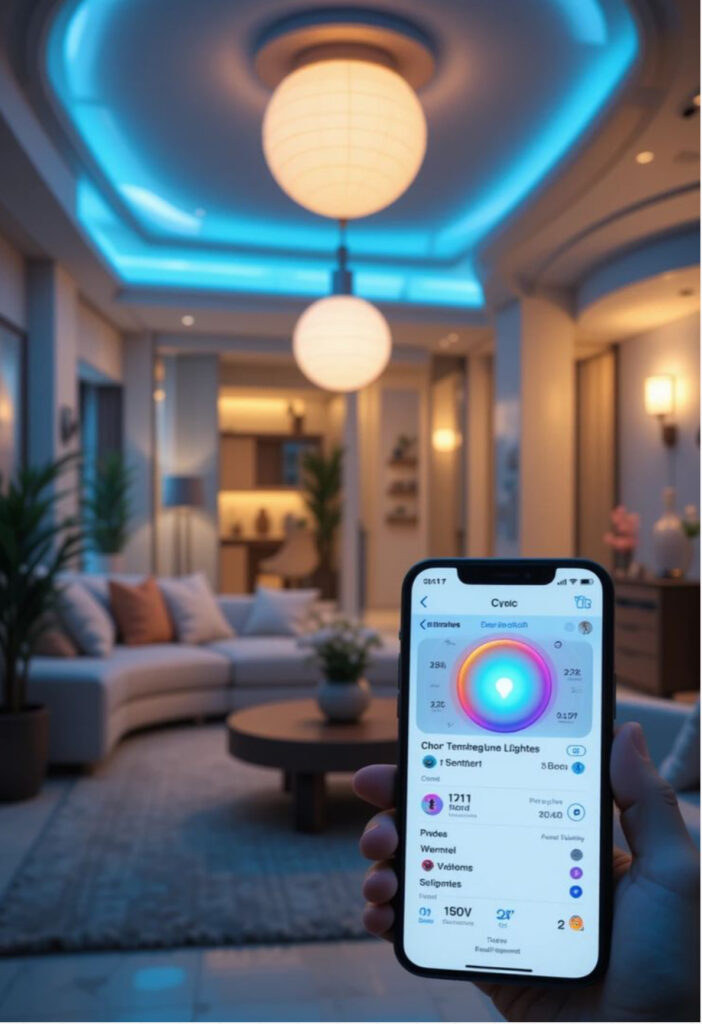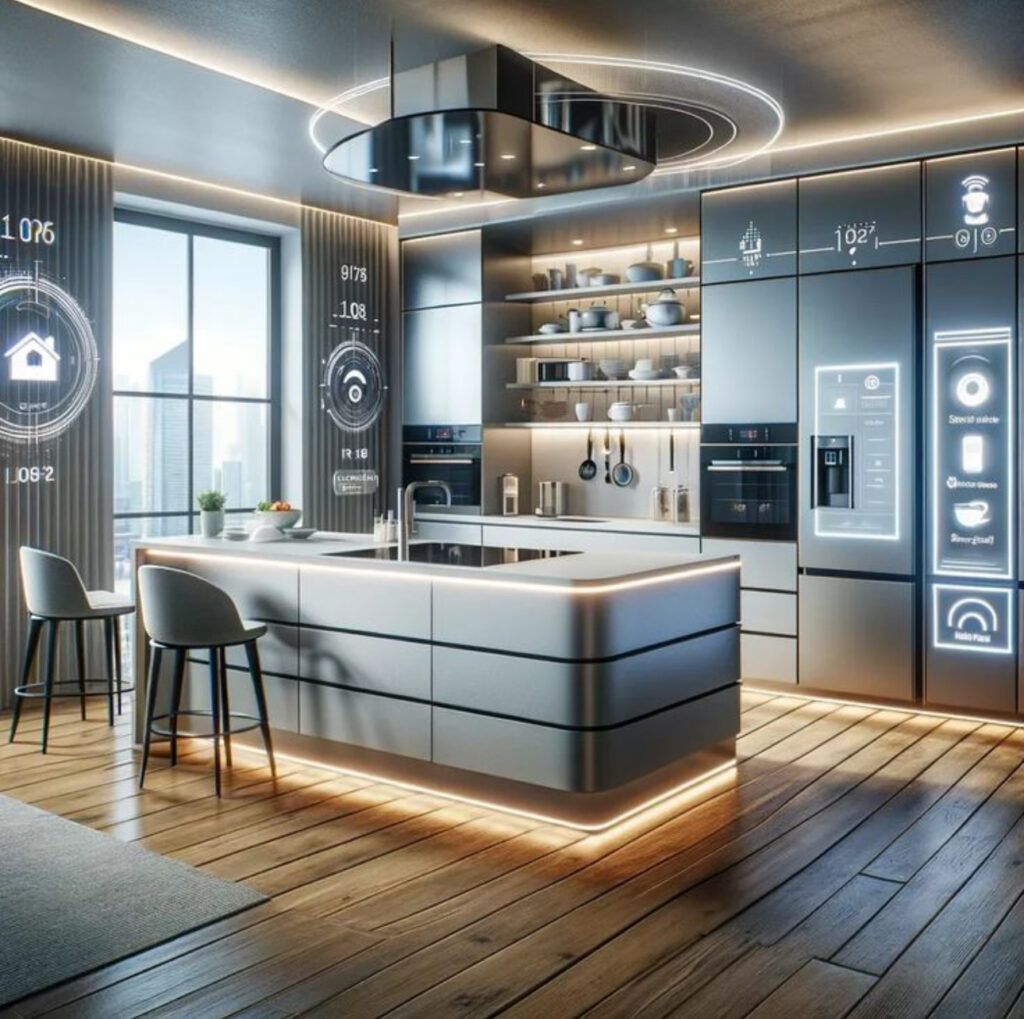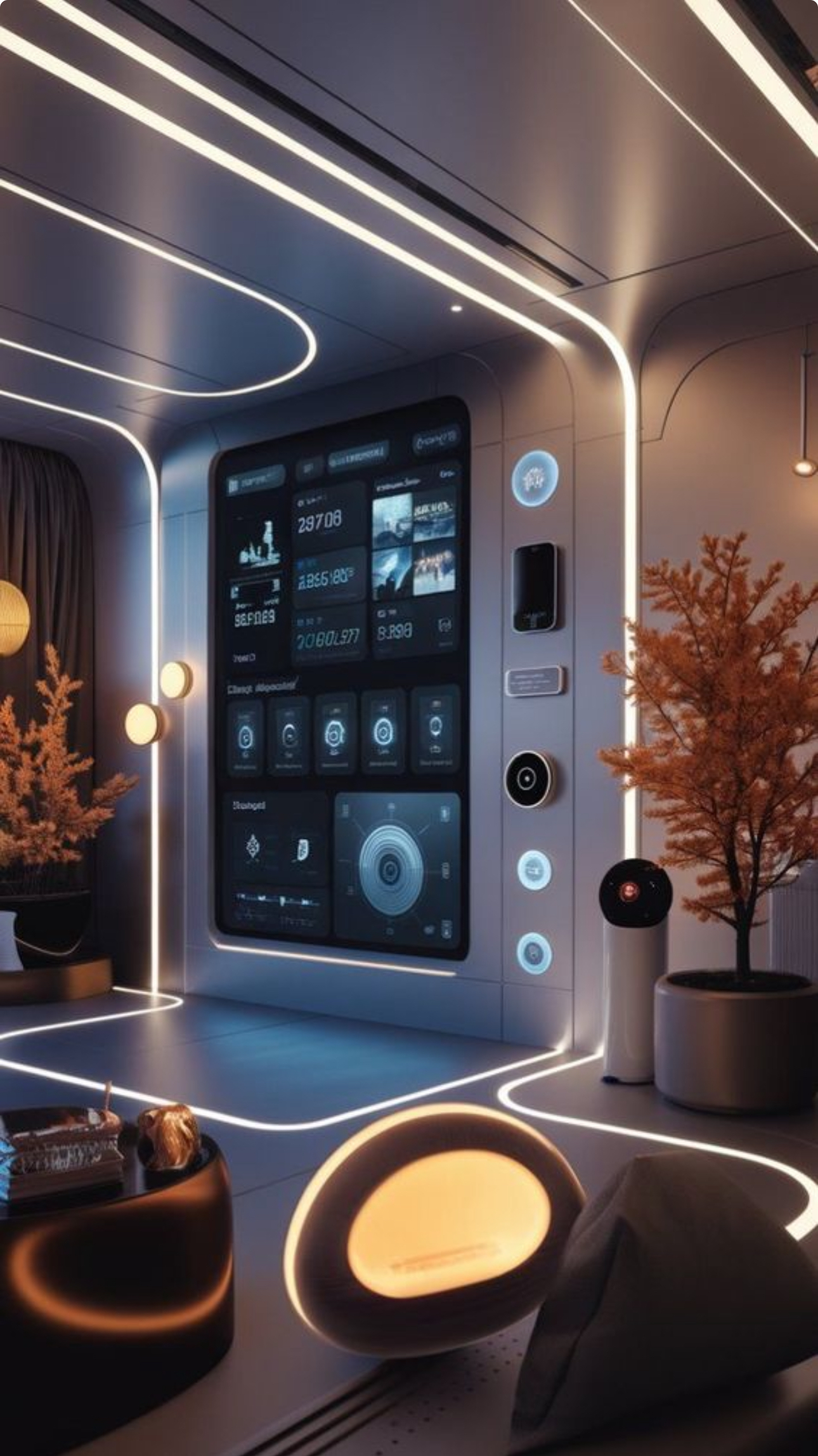Smart home technology is no longer a futuristic dream—it’s a part of everyday life. Imagine waking up in the morning, and your coffee maker has already brewed the perfect cup, your lights adjust automatically to your mood, and the thermostat has set the ideal temperature—all before you even get out of bed. It’s no surprise that about 70% of American households will use at least one smart device by 2025, and this number is steadily growing.
But why is this technology so popular? Smart home devices are convenient, cost-effective, and enhance security. Voice assistants, smart thermostats, intelligent lighting, and security cameras allow you to control your home from anywhere. With proper automation, energy consumption can decrease by up to 30%, making your lifestyle not only more comfortable but also more eco-friendly.
Most Popular Smart Home Device Categories

1. Voice Assistants:
Amazon Alexa, Google Home, or Apple HomePod let you control lighting, music, temperature, and even online shopping with simple voice commands. Busy lifestyles benefit the most, as these devices save time on daily household tasks.

2. Smart Lighting: Modern smart bulbs and advanced lighting systems do far more than simply illuminate a room—they transform the atmosphere of your home while also helping you save energy and reduce utility costs. With programmable settings, you can have lights automatically turn on or off when you enter or leave a room, providing convenience, security, and a sense of effortless control. Many systems are equipped with sensors or integrations that allow them to adjust brightness based on the level of natural light, ensuring that your living spaces are always optimally lit without wasting electricity. This not only enhances energy efficiency but also has tangible benefits for your mood, focus, and even sleep quality, as lighting can be tailored to support your body’s natural circadian rhythms.
Smart lighting systems often include features like color temperature adjustment, dimming, and scheduling, which allow you to create the perfect ambiance for any activity—from bright, energizing light for working or reading to soft, warm tones for relaxing or entertaining guests. Some systems can even be controlled remotely via a smartphone app or voice assistants, giving you the ability to adjust settings on the go, whether you’re at home, at work, or on vacation. Additionally, many smart lights can sync with other smart home devices, such as sensors, alarms, or entertainment systems, further enhancing convenience and safety. In short, smart lighting combines efficiency, wellness, and atmosphere, transforming ordinary rooms into comfortable, adaptable, and energy-conscious spaces that cater to your lifestyle.

3. Security Systems: Modern smart security systems offer far more than basic protection—they provide peace of mind and proactive home monitoring through a combination of smart cameras, electronic door locks, and motion sensors. These devices are designed to detect unusual activity in and around your home, sending instant alerts directly to your smartphone so you can respond immediately, no matter where you are. Many advanced systems even allow for real-time video monitoring, giving you the ability to check on pets, deliveries, or family members remotely. Some setups go further by integrating with local police or professional security services, ensuring that help can be dispatched quickly if a serious incident occurs.
This technology is particularly valuable for families who travel frequently, live in urban environments, or own multiple properties, as it allows homeowners to maintain a constant sense of security without being physically present. Smart door locks can be programmed to lock or unlock automatically or grant temporary access to visitors, cleaners, or service providers, eliminating the need for spare keys and adding an extra layer of control. Motion sensors can be tailored to activate lights, alarms, or notifications only under specific conditions, reducing false alerts while enhancing safety.
Beyond security, these systems can also integrate with other smart home devices, such as lighting, thermostats, or smart assistants, creating a comprehensive, automated, and responsive home environment. Ultimately, investing in a smart security system combines convenience, safety, and technology, giving homeowners confidence that their property and loved ones are protected around the clock.

4. Intelligent Appliances: In the modern smart home, intelligent appliances are transforming the way we manage household chores, making daily tasks easier, more efficient, and even more enjoyable. From smart refrigerators and ovens to washers and dishwashers, these devices are designed to save both time and money while providing convenience that traditional appliances simply cannot match. Take a smart refrigerator, for example: it can monitor the freshness of your food, alerting you when items are about to expire and helping you reduce waste. Many smart fridges also include features that allow you to create shopping lists automatically based on inventory or meal plans, helping you streamline your grocery trips and avoid unnecessary purchases.
Smart ovens are another example of how technology enhances home cooking. They can preheat automatically, adjust cooking times and temperatures, and even provide step-by-step guidance for recipes, ensuring that meals come out perfectly every time. Some ovens also allow remote control through smartphone apps, meaning you can start cooking while you’re on your way home from work, making mealtime faster and stress-free.
In the laundry room, smart washers and dryers optimize water, energy, and detergent usage, adjusting cycles to the type and size of your load. They can send notifications when a cycle is complete or even diagnose minor issues before they become major problems, reducing maintenance costs.
The real beauty of intelligent appliances is how they integrate into a connected ecosystem, allowing you to monitor, control, and schedule multiple devices from a single app or smart assistant. This not only saves time and reduces energy consumption but also provides a more organized, efficient, and eco-friendly household. By combining automation, convenience, and real-time feedback, smart appliances help make everyday life simpler, more productive, and cost-effective, turning routine chores into an effortless experience while supporting sustainable living and smarter home management.

How Smart Home Devices Can Save You Money
Many people often assume that smart home devices are luxury items, reserved for tech enthusiasts or high-end households, but the reality is quite different. While the initial investment may seem significant, these devices frequently pay for themselves over time by helping homeowners reduce energy consumption, lower utility bills, and increase overall efficiency. One of the most impactful examples is the smart thermostat, which can optimize heating and cooling schedules based on your habits, room occupancy, and even local weather conditions. By adjusting temperatures intelligently and avoiding unnecessary heating or cooling, smart thermostats can reduce energy bills by 20–30%, providing both financial savings and environmental benefits.
In addition to climate control, smart lighting systems and plugs further enhance energy efficiency. These devices can automatically turn off lights, appliances, or electronics when not in use, eliminating wasted electricity and helping households save money each month. Some systems also allow you to schedule usage, dim lights, or integrate with motion sensors, ensuring that energy is used only when needed. Beyond saving money, these features contribute to a more sustainable, eco-friendly home, reducing the overall carbon footprint and promoting environmentally conscious living.
Smart home devices also offer the benefit of convenience, which indirectly supports cost savings. For instance, controlling multiple devices from a single app or using automated schedules means you are less likely to leave lights or appliances running accidentally. Over time, this combination of automation, efficiency, and real-time monitoring leads to measurable reductions in household expenses while improving comfort and control.
Ultimately, smart home technology represents a long-term investment, where the upfront cost is offset by savings on utilities, reduced waste, and the added value of convenience and safety. By optimizing heating, cooling, lighting, and energy usage, smart devices deliver practical financial returns while also enhancing the overall quality of life, proving that they are far more than just luxury gadgets—they are smart, cost-effective solutions for modern living.
Many devices also integrate with energy-saving programs, making your home more environmentally friendly. American households investing in this technology gain both convenience and long-term savings.

Smart Home Tips for Beginners
- Start with essential devices: voice assistant, thermostat, smart lighting.
- Ensure your devices are compatible, so you can expand your system later.
- Use automated schedules to maximize comfort and savings.
- Don’t forget about security: keep software updated and use strong passwords.
What’s Next After 2025?
Trends indicate that smart homes will become even more intelligent. AI-powered systems will predict your habits, automatically adjusting lights, temperature, and even suggesting groceries or household tasks. Integrated health devices may monitor family members’ wellness, sending alerts before problems escalate.
Conclusion
Smart home technology is more than convenience—it’s an investment in your time, money, and security. American households are increasingly recognizing its benefits, and adoption is growing every year. By investing in key devices now, you can gradually expand your system and enjoy the full benefits. Every smart device adds comfort, savings, and peace of mind—a combination that attracts readers and advertisers alike.
